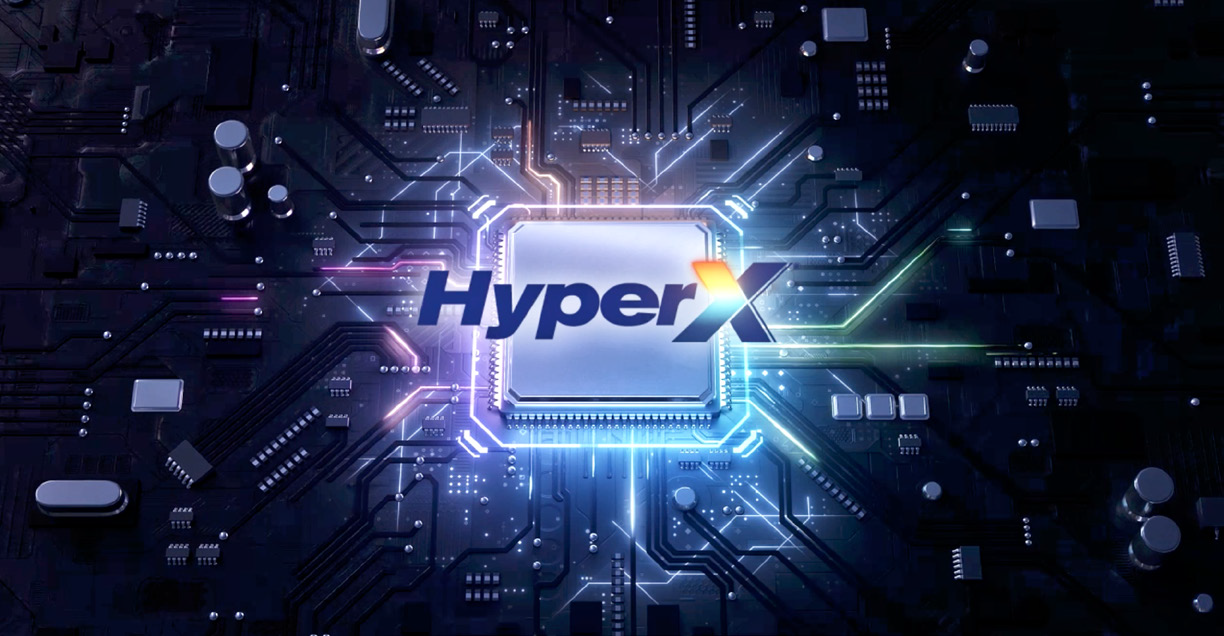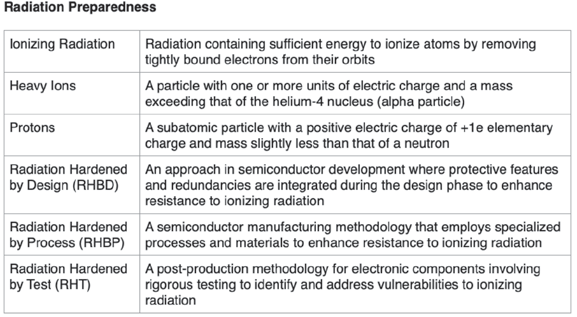In the realm of space exploration and satellite technology, the design and selection of processors play a pivotal role in defining mission success — processors crafted explicitly for space missions distinguish themselves through four key differentiators, each contributing to spaceborne systems’ overall affordability, efficiency, and reliability. These differentiators include enhanced radiation resistance, depth of capability measured in compute density, superior energy efficiency, and a meticulous selection process prioritizing speed and reliability.

System-on-a-Chip (SoC) technologies stand out within this landscape, encapsulating these crucial attributes and embodying the forefront of high-reliability processors. As we explore processors designed for space, we delve into the intricacies of these key differentiators, unraveling the technological advancements that propel the field of space-based processing into new frontiers.
The Earth’s atmosphere protects the ground from the ionizing radiation that is ever present in our solar system. Without it, precautions must be taken to ensure electronic devices in space are shielded and prepared for bombardment. Radiation Hardening to prevent single-event-effects (SEEs) can be achieved through RHBD, RHBP, or RHT (see chart above).
Radiation hardening requirements for satellites orbiting the Earth differ distinctly from those in lunar or deep space missions due to variations in the intensity and nature of radiation exposure. Earth’s magnetosphere offers a degree of protection to satellites in LEO/MEO/GEO, shielding them from some of the harsh space radiation.

As a result, processors and electronic components in these orbits face a reduced risk of SEEs. In contrast, lunar and deep space missions lack the protective shield of Earth’s magnetosphere, exposing spacecraft to more intense radiation from galactic cosmic rays and solar particle events.
SEEs pose a significant threat to semiconductors in satellites that are exposed to ionizing radiation in space. These effects occur when a single energetic particle, such as a proton or heavy ion, strikes a sensitive area of the semiconductor, leading to a temporary or permanent alteration in its behavior.
SEEs can manifest as Single Event Upsets (SEUs), where the particle induces a bit flip, changing the state of a memory cell, or as latch-ups, where the semiconductor gets stuck in an undesirable state. In some cases, the SEE will manifest as a Single Event Burnout (SEB), a condition that can cause the device’s destruction due to a high current state in a power transistor.
In the intricate space environment, where satellites are bombarded by cosmic rays and solar particle events, the occurrence of SEEs can compromise the reliability and functionality of electronic components.
Radiation-hardened semiconductors are designed to withstand such events, incorporating protective features and redundancies to mitigate the impact of SEEs and ensure critical systems’ continuous and reliable operation on board satellites.
Traditionally reliant on “bent pipe” architectures, where satellites simply relay signals without processing them onboard, the emergence of radiation-hardened SoCs has paved the way for onboard processing.
The Hyper X Midnight, radiation-hardened by design, introduces a transformative capability for processing and interpreting data directly on the satellite. This shift enhances the efficiency of space communication and reduces the dependence on ground-based processing, enabling quicker response times and greater autonomy in decision-making for satellite missions.
Depth Of Capability
The depth of capability in space processors is a defining characteristic that sets them apart from their conventional counterparts. These specialized SoC designs exhibit exceptional computational power, often reaching into the 600+ GFLOP range, positioning them as veritable supercomputers on a chip.

For context, a gigaflop (GFLOP) is a unit of measurement representing one billion floating-point operations per second, quantifying a computer’s or processor’s computational performance or processing speed. It provides insight into how many mathematical calculations a system can perform within a single second and also serves as a crucial metric in evaluating the processing capabilities of advanced technologies, including space-based processors.
The heightened performance of these processors is crucial for addressing the complex computational demands of space missions, ranging from satellite communication to scientific data processing.
Beyond raw processing power, space SoCs boast robust Input/Output (I/O) capabilities, a vital feature given the diverse applications they cater to. Many space missions fall under the Software-Defined Radio (SDR) and Software-Defined Networking (SDN) categories, where flexible and programmable processing is essential. These processors facilitate dynamic reconfigurability, enabling them to adapt to different communication protocols and network configurations.
As an example, in hyperspectral imaging, space SoCs contribute significantly to processing vast amounts of spectral data, enabling high-resolution imaging for scientific research and Earth observation. For Synthetic Aperture Radar (SAR) applications, these processors play a crucial role in real-time signal processing, enhancing the accuracy and efficiency of radar systems for various purposes, including terrain mapping and environmental monitoring.
In the realm of cybersecurity, the adaptability of space SoCs proves crucial for implementing sophisticated security measures and safeguarding sensitive data transmitted through space-based networks. Furthermore, in communications routing, these processors manage the complex network configurations of satellite communication systems, ensuring seamless and efficient data exchange.
Artificial Intelligence (AI) anomaly detection is another critical use case where space SoCs shine. Their computational power and adaptability empower AI algorithms to analyze vast datasets in real-time, identifying and responding
to anomalies or potential threats in space-based systems. The versatility and depth of capability inherent in these processors play a pivotal role in meeting the intricate computational needs of space exploration and communication, making them indispensable components in pushing the boundaries of what is achievable beyond Earth’s atmosphere.
Energy Efficiency
Energy efficiency emerges as a paramount consideration in the design of processors for space applications. In the unique and challenging space environment, where power sources are often limited, every watt of energy becomes precious. The significance of energy efficiency is underscored by the direct relationship between power consumption and the size of solar panels required for satellite missions. Larger solar panels are necessary to generate more power, but they contribute to increased payload size, affecting the overall bus size of the satellite. This shift in bus size can cascade, influencing the launch costs per satellite. Consequently, achieving optimal energy efficiency is a strategic imperative to minimize the logistical and financial burdens of launching and maintaining space-based systems.
For example, take a smallsat with solar panels, where the satellite typically weighs between 10 to 100 kgs and the power is approximately 250W. The increased power demand on a medium satellite with a 1.5 kW power payload necessitates more extensive solar arrays, impacting both the satellite’s weight, which can reach up to 1000 kgs, and consequently, the launch costs.
Solar panels are not the only way to power a spacecraft. However, the importance of energy efficiency remains in place. The following estimates demonstrate the restraints on Li-Ion batteries. A CubeSat equipped with a Li-Ion battery offering a modest 0.1 KWh capacity is priced at $100. As we increase the scale, a microsatellite, with a tenfold increase in energy storage at 1 KWh, also sees a 10 fold increase in price at $1000.
Scaling further, a smallsat boasting 10 KWh capacity sees its cost rise to $10,000. Moving into the realm of medium satellites, the energy storage capacity reaches 100 KWh, with a corresponding cost of $100,000. Finally, large satellites designed for more complex missions and equipped with a substantial 1000 KWh Li-Ion battery demand a significant investment of $1,000,000.
These data estimates underscore how judicious power consumption directly influences the financial aspects of launching and maintaining satellites across different size categories. Space SoCs optimized for energy efficiency play a pivotal role in maximizing the utility of these energy storage systems, ensuring that the power consumed aligns with the mission’s objectives while minimizing associated costs.
Speed + Reliability
In the intricate realm of space exploration, where the success of missions hinges on cutting-edge technology, selecting processors is a meticulous process.
SoC devices undergo a sophisticated manufacturing journey involving wafer processes. Multiple SoCs share a single wafer, and their performance can exhibit subtle variations. Additionally, intentional adjustments can be made in specific process lots to skew the speed intentionally. This intentional variation allows for a diverse range of performance characteristics, catering to the dynamic requirements of different space missions.
As space agencies prepare for launches, the emphasis shifts to reliability and speed. Each SoC on a wafer is distinct, and units selected for space missions undergo rigorous scrutiny. The criteria for selection prioritize units displaying the highest margin over the desired minimum speed.
This careful curation ensures that the processors selected for launch meet and exceed the performance thresholds essential for the demanding conditions of space. In this finely tuned selection process, reliability is paramount, ensuring that the processors can withstand the harsh environment of space and deliver consistent, high-speed performance throughout the duration of their mission.
In the vast expanse of space, where precision and dependability are non- negotiable, SoCs are the technological vanguards selected with utmost precision for their unparalleled speed and unwavering reliability.
Conclusion
In the vast expanse of space, the evolution of radiation-hardened semiconductors, exemplified by innovative SoC solutions such as the Hyper X Midnight, marks a significant paradigm shift in space-based communication systems by allowing for onboard computing. As we embrace this new era of onboard processing with radiation-hardened semiconductors, the potential for increased resilience and adaptability in space-based operations becomes a reality.

Energy efficiency emerges as a paramount consideration in the design of processors for space applications. In the unique and challenging space environment, where power sources are often limited, every watt of energy becomes precious.
The direct relationship between power consumption and the size of solar panels underscores the significance of energy efficiency. Larger solar panels are necessary to generate more power, but they contribute to increased payload size, affecting the overall bus size of the satellite. This shift in bus size can cascade, influencing launch costs per satellite. Consequently, achieving optimal energy efficiency is not merely a matter of conserving power but becomes a strategic imperative to minimize the logistical and financial burdens associated with launching and maintaining space-based systems.
Space SoCs optimized for energy efficiency play a pivotal role in maximizing the utility of these energy storage systems, ensuring that the power consumed aligns with the mission’s objectives while minimizing associated costs.
www.coherentlogix.com


